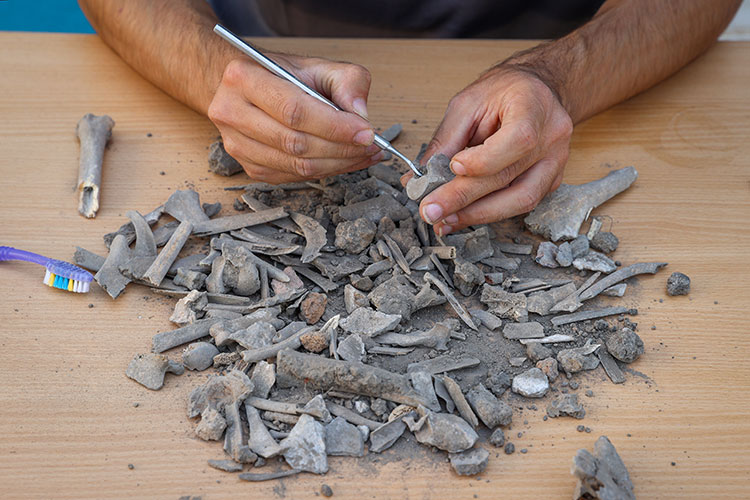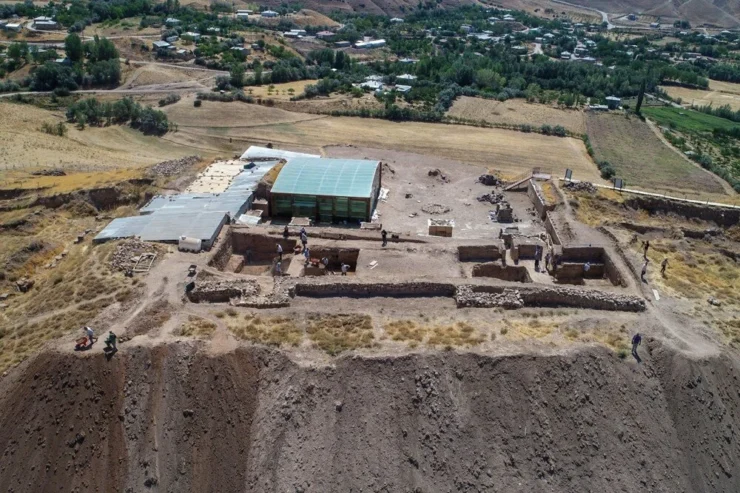During the excavations carried out in the Ayanis Castle, which was built by the Urartian King Rusa II on the hill overlooking Lake Van, a new area used as a “garbage” by the royal family in the Urartians was unearthed.
Excavation and restoration work has been carried out for 34 years in the castle, which is one of the most magnificent structures of the Urartu Kingdom with its decorations, mud-brick walls and stone engravings that reached today in the Tuşba district of Van city in Türkiye.
The data obtained about the settlement of Ayanis Castle reveal that the castle was inhabited in two separate periods, the Urartian and the Middle Ages. However, since the architectural remains of the Middle Ages were largely destroyed, the part of the castle that stands today is mostly represented by Urartian structures. The outer city was inhabited only in the Urartian period. One of the important structures of the castle is the temple located at the highest point of the castle (1866 m.). On the front of the temple, there is the third longest inscription of Urartu. The inscription says that the temple was built by Rusa II for the god Haldi.
The excavations carried out under the chairmanship of Atatürk University Archeology Department Faculty Member Prof Dr Mehmet Işıklı were concentrated on the northern slope of the castle this year.
In the studies, a new area used as a garbage dump by the royal family in the Urartians was identified. In the excavations carried out here, seals, bulla (seal stamps), hooks, ceramic pieces and many small and bovine animal bones were found.



The findings, which will be analyzed in the laboratory environment, are expected to give important clues about the economic and social life, especially the nutritional conditions of the royal family in the Urartians.
Prof. Dr. Işıklı told AA that this year the studies were carried out in an important area. “We encountered a surprise find around the castle. We saw very rich cultural deposits flowing down the walls. For archaeologists, this is a treasure. We found thousands of animal bones, objects that lost their function, written documents and seals in this cultural deposit. We were very excited by the finds. We saw that it was a dump. We tried to speed up the excavations. We collect the animal bones found here one by one and periodically separate them. We try to reveal how the royal family ate and what they consumed in what periods. In other words, we are trying to understand the human dimension of the Urartians. We are trying to understand the royal family, the elites, the elites living in the castle.”
Vedat Sezer, a doctoral student working on zooarchaeology, said: “Most of the bones belong to small and bovine animal. Some bones belong to migratory and aquatic birds. There are many traces of butchery and consumption on the bones. The most surprising ones were the seal impressions. The Urartians were spread over a wide geography. Many animal bones were found before. These were usually found in warehouses. However, this is the first time we are excavating a royal dumpster in the Urartians.” used the phrases.
